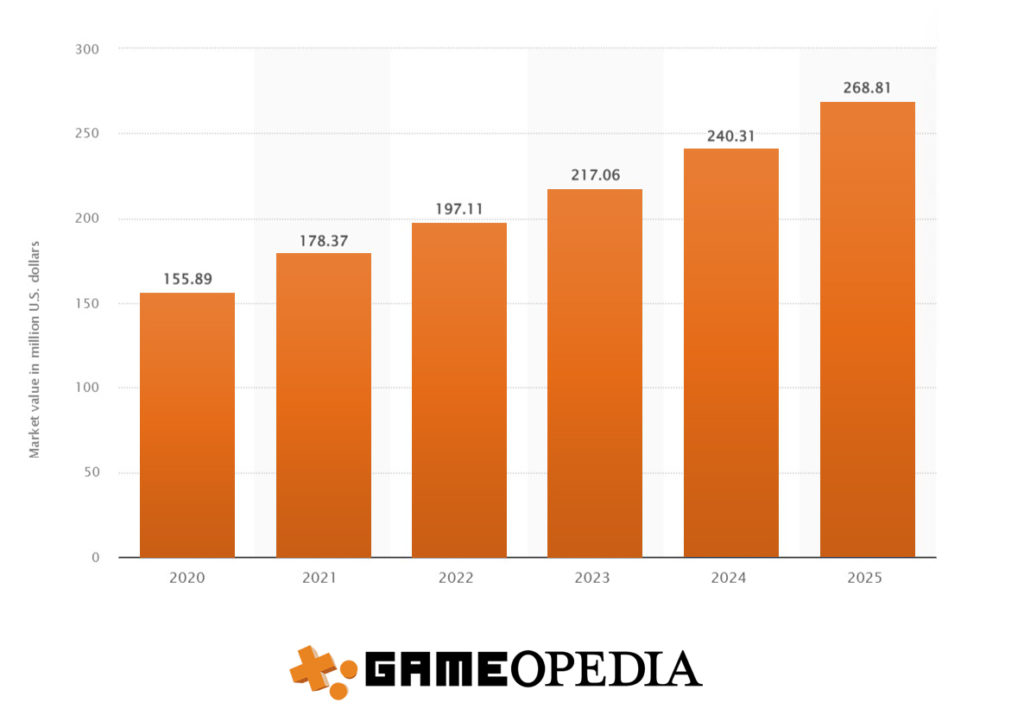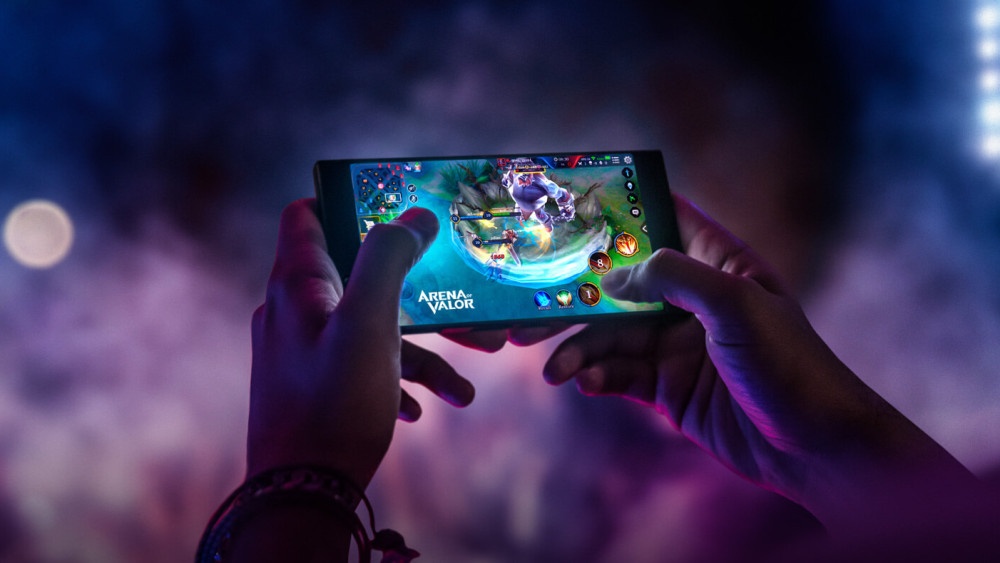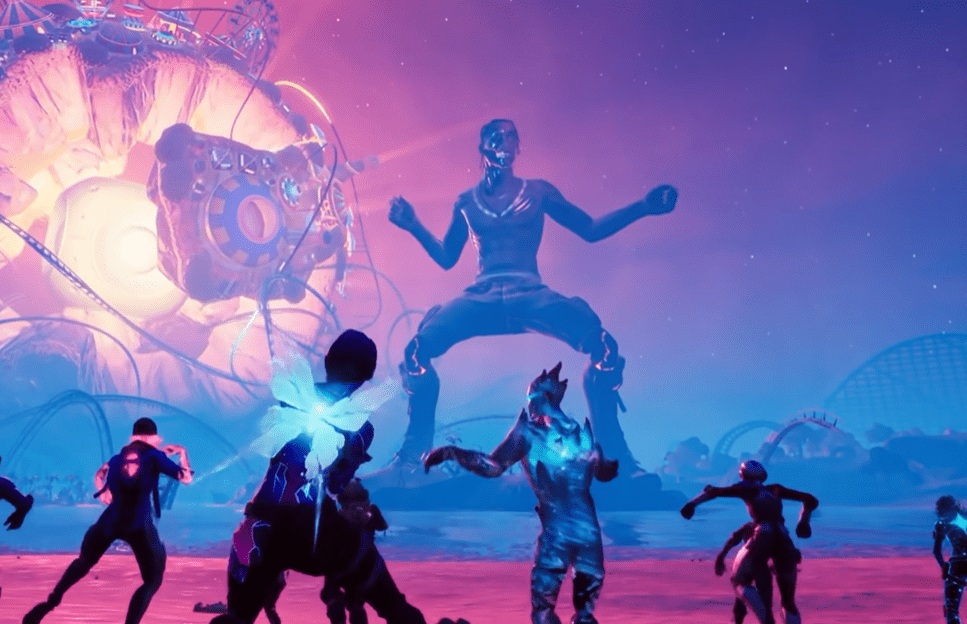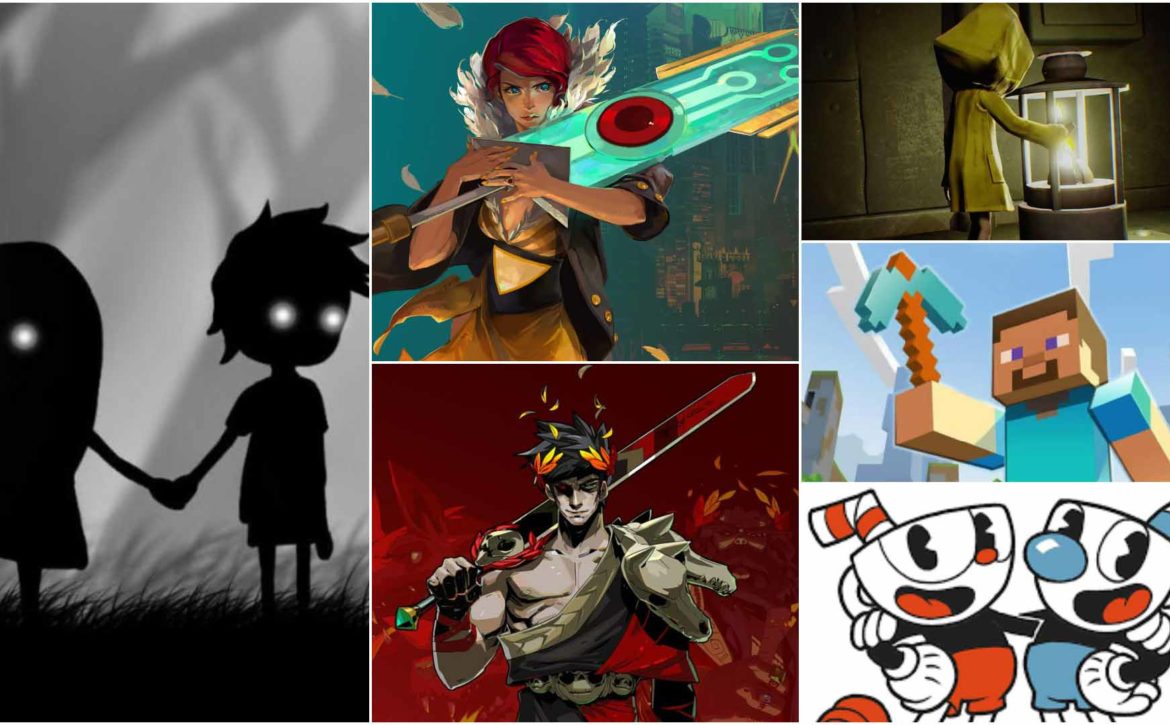8 Major Gaming Trends to Look Out for in 2022
Things have never looked better for the video game industry. It has grown exponentially over the last few years and the rate of growth doesn’t seem to be slowing down any time soon. It is estimated that over 2.5 billion people around the world play video games, and they contributed to the video game industry’s record-breaking 2021 revenue of $180 billion. The global gaming market is set to reach $256.97 billion by 2025.

There are several trends that have driven this explosive growth in revenue and audience: let’s look at those likely to be relevant in 2022.
Gaming Trends to Look Out For in 2022
1. The Massive Growth of Mobile Gaming
When it comes to gaming, a massive trend over the past decade that is only increasing in prominence is the rise of mobile gaming. The market for mobile games is expected to register a CAGR of 14% between 2020 and 2025. This is a result of improving technology when it comes to smartphone hardware and the growing penetration of these devices as a direct result of cheap internet data packs. Mobile games also often prefer the free-to-play (F2P) revenue model as it increases the number of downloads by users. This is because players can try out a game before deciding if it’s something they like and want to invest their time and money in. One of the things to note is the play-to-earn (P2E) business model which is slowly gaining popularity. Developed with blockchain technology (we’ll look at this in detail later), P2E games let players generate real income held in a crypto wallet, which means that even if they leave the game or it shuts down, they’ll be able to take these assets with them.

The sheer volume of gamers who play on smartphones and tablets makes it the biggest gaming platform. A survey in 2021 found that 68.1 percent of respondents stated that they played games via smartphone, making it the most popular gaming device worldwide. According to AppAnnie, consumers spent 50% more on mobile games than all other gaming platforms combined in 2021. Experts believe this trend will continue in 2022 as more games will support cross-play gaming. Asia-Pacific is emerging as the major contributor to the growth of the global mobile gaming industry.
AAA mobile game releases are also likely to increase. The recent success of miHoYo’s Genshin Impact as well as that of prior releases like Fortnite, PUBG Mobile, and Call of Duty Mobile have proven that AAA mobile gaming experiences are not only popular but also highly profitable. A month into Genshin Impact’s release, it was downloaded 15 million times and earned more than $150 million in revenue. The key to successful AAA mobile game releases are high-quality graphics and a game experience similar to what you’d get on a PC or console.
Finally, gamers are increasingly looking for mobile games that come with social features. In fact, according to App Annie, roughly two-thirds of the top 50 mobile games have at least one social feature. These include in-game chat, guilds and clans, co-op and PvP modes, social media connections, and more.
2. Cloud Gaming Becoming Viable
For many years, gamers have been waiting for innovations that would make cloud gaming go mainstream. It has the potential to revolutionise the gaming and entertainment industries by eliminating the need for expensive hardware and enabling remote access to game content. The prominent cloud gaming services in the current gaming ecosystem include PlayStation Now, Xbox Cloud Gaming, Amazon Luna, and Nvidia’s GeForce Now. Google has also committed to bringing at least 100 new games to their cloud service Stadia by the end of 2022. The future only seems brighter as cloud gaming is expected to expand at a compound annual growth rate (CAGR) of 48.2% from 2021 to 2027.

We’ve already looked at the advantages and the future of cloud gaming in detail in one of our previous articles. With cloud gaming, you don’t need to upgrade your PC or console. Instead of buying expensive gaming hardware, a basic laptop or even a mobile phone would do. You can play games on any OS or Device. Gaming on the cloud would allow games to become more platform-independent, allowing PCs and tablets running Mac, Linux, Android, and other operating systems to support games that might otherwise only run on Windows.
Other benefits include being able to start playing games instantly, as the server already has the game installed and can load the game immediately. This helps avoid waiting for patch updates. Cloud services would allow for very easy spectating of games, such as professional gaming matches. With the significant improvements in internet infrastructure, speeds, and bandwidth, streaming games might become prominent in 2022. The lack of a need to download periodic updates and possibilities of large-scale multiplayer gaming also improve its appeal.
3. Blockchain Gaming and NFTs
A blockchain is essentially a chain of data blocks on a computer network that is transparent to all of its users as well as anybody else. It cannot be altered or relocated. This way, a complete record of everything that has transpired on the network in relation to the data is preserved. Blockchain gaming is a means of turning digital assets inside video games (such as collectibles or cosmetic skins) into real-world assets in the form of NFTs or non-fungible tokens. Because of its liquidity and the fact that gamers are used to tokenization, implementing blockchain in gaming is fairly simple.
From a zero-value market size, the blockchain gaming industry grew to $3 billion in 2021 and is projected to rise to $39.7 billion by 2025. Fuelled by free-to-play and play-to-earn models, the blockchain gaming industry has attracted over 1.5 million diverse gamers across the globe. According to January’s report by popular data resource, DappRadar, blockchain-based online games received over $1 billion in funding in January alone, as compared to 2021 seeing investments worth $4 billion in total.
Cryptokitties is an online game that runs on the Ethereum blockchain. The game involves a play-to-earn model of buying, selling, and breeding digital kittens. By December 2017, players had already spent an incredible $ 6.7 million in-game. The most expensive Cryptokitten was sold for $172,000. One of the most popular recent blockchain games is Axie Infinity, which is a play-to-earn NFT blockchain game built on the Ethereum network. During the game, players earn Smooth Love Potion tokens, which can be traded for real money through a cryptocurrency exchange. Axie Infinity has made over $4 billion in NFT sales since its launch. It also shows that there have been 14.45 million transactions and 1.62 million buyers since its inception.

Blockchain gaming comes with a few advantages. Firstly, it improves security. It is nearly impossible to hack into data across servers because of blockchain’s strength of decentralization and highly effective data encryption measures. Gamers and developers can also leverage blockchain technology to construct resource-rich games and apps, as well as upgrade game versions and earn awards through blockchain gaming mining procedures. The big question is what can NFTs and related blockchain concepts bring to games that don’t already exist, or can’t be replicated with centralised approaches? Another major problem is the lack of regulation of NFT transactions which has led to several scams.
As things stand, NFT games face many challenges, some of which include:
- Valve has banned crypto- and NFT-based games on Steam, the biggest PC storefront, inhibiting NFT growth on PC.
- South Korea has banned crypto-based games on Google Play and the iOS App Store, limiting growth in one of mobile’s highest-spending markets.
- Players have advocated against NFTs in games, as shown by the backlash to Ubisoft’s Ghost Recon NFT announcement.
4. The Metaverse
One of the biggest things to look out for is the Metaverse. The metaverse may be worth $800 billion by 2024 due to a surge in interest during the pandemic. That’s up from $47 billion in 2020. Facebook’s rebrand to Meta is a sign that they, one of the biggest tech companies, believe it is the future. Meta has also announced an investment of $10 billion over the coming years to develop metaverse technologies. In October 2021, Tencent established the F1 studio under the subsidiary TiMi Studio Group for focusing on metaverse development. In June 2021, Epic Games said that it has secured $1 billion in its latest round of investments in its quest to create the metaverse, a realm of interconnected virtual worlds like those depicted in novels like Snow Crash and Ready Player One. Disney is developing a metaverse theme park.
But what is the metaverse? A New York Times article described it as “a variety of virtual experiences, environments, and assets that gained momentum during the online-everything shift of the pandemic. Together, these new technologies hint at what the internet will become next.” Despite the lack of a universal definition, the metaverse is already seeing massive traction in the video games industry with Epic Games and Roblox blazing the trail.
For instance, Fortnite — an Epic Games property — hosted a virtual concert that was attended by over 12 million people, and a collaboration between Roblox and Gucci created a virtual Gucci Garden space that sold limited edition virtual bags. One of the digital bags even sold for $800 more than the actual, tangible version! Both of these companies are a great example of how the metaverse can be a superb virtual environment where everyone within can interact and enjoy immersive experiences and stories. While some might simply want to log into the latest FPS game to shoot guns with their friends, others will find room in these worlds to engage in socialising, chatting, or other forms of shared interaction.

5. Acquisitions and Consolidations in the Gaming Industry
In the last few years, we’ve been seeing an increased number of acquisitions and mergers in the video game industry. Behemoths have been acquiring smaller companies to improve their offerings, acquire IPs, and expand their audience base. In 2021, there was a spree of acquisitions starting off with the acquisition of Activision Blizzard by Microsoft for the massive sum of $68.7 billion and Sony acquiring Bungie for $3.6 billion. Several more have come through, such as Sony acquiring game development company Haven Studios and Borderlands developer Gearbox acquiring 250-person indie dev team Lost Boys Interactive to work on Borderlands 4 and a fresh IP. Other significant acquisitions include 2021’s newly-public ironSource acquisition of Luna Labs, Soomla, Bidalgo, and Tapjoy. Liftoff and Vungle merged and acquired GameRefinery, AlgoLift, JetFuel, and TreSensa.
This is true of the mobile gaming sector as well, with mobile gaming giant Zynga acquiring two big Turkey-based developers: Peak Games for $1.8 billion and four-fifths of Rollic Games for $180 million. In 2020, they also announced the acquisition of a Chinese studio – StarLark for $315 million. Embracer Group acquired a total of seven studios in 2021. They also entered into an agreement for $300 million to acquire the development studios Crystal Dynamics, Eidos-Montréal, Square Enix Montréal, and a catalogue of IPs including Tomb Raider, Deus Ex, Thief, Legacy of Kain and more than 50 back-catalogue games from Square Enix Holdings.
6. Games and Cross-Media Storytelling
Recently, there seems to be a barrage of high-standard, hugely grossing media being released based on video games. The release of Netflix’s Arcane (based on Riot Games’ extremely popular game League of Legends) and The Witcher series (the characters based on Andrej Sapowski’s books which became world-famous after the release of the games) have proved that games can also be adapted into media and other IPs which can be extremely successful.

“The Witcher,” was on track to be Netflix’s biggest first season ever for a TV series. Netflix said through its first four weeks of release, 76 million households watched the fantasy series. Future releases are also under production, such as the upcoming Last of Us and Borderlands series based on the games of the same name.
There are also reboots happening of franchises that were initially less than successful, such as the Resident Evil movies. It is being remade into Resident Evil, a new live-action series based on Capcom’s legendary survival horror game franchise, and is coming to Netflix. Another example is the Tomb Raider franchise, whose movies were box office failures. However, Netflix, Crystal Dynamics, Square Enix, and Legendary Television are teaming up for a brand new animated series based on the video game franchise to inject some life into the reboot.
7. The Explosive Popularity of Esports
In 2021, the global esports market was valued at just over $1.08 billion, an almost 50 percent increase from the previous year. This number is expected to increase massively with significant investments being made by game publishers, gaming organisations and their sponsors, and other parties in the gaming ecosystem. If you want to read more about this as well as revenue channels, trends, and the future of esports, check out our article where we get into the details.
Significant revenue comes in from sponsors as well as ads on broadcasts of tournaments, especially international ones. There are also other areas that are likely to explode in 2022 though and the foremost among these is esports betting. The global esports betting market size is expected to reach $13.05 billion by 2025, from $7983.2 million in 2019. The number of esports events one can bet on is also growing exponentially, from 3,000 events available in July 2019 to over 50,000 events in July 2020.
Finally, with restrictions due to the Covid-19 pandemic finally being lifted, a lot of offline events are being planned. These kinds of events are usually held in huge arenas, with thousands of fans attending. This helps significantly with publicity and media impressions as well as increased revenue from ticket sales, limited-time merchandise, and more.

8. VR and AR Gaming Developments
Since the release of novels like Ready Player One and Neuromancer, a fully-immersive virtual universe has been a dream for tech giants, gaming enthusiasts, and the like. VR technology is the furthest humanity has gotten to that lofty goal. Thanks to the falling price of hardware, VR gear such as headsets is becoming increasingly affordable. They also benefit from being capable of functioning both as standalone devices and being connected to a gaming PC to take advantage of their dedicated hardware to enable even more immersive and graphically-rich VR experiences. We’ve gone into VR and its evolution in detail in this article.

The global VR market was valued at $7.7 billion in 2020 and is projected to reach $26.8 billion by 2027 with a CAGR of 19.0% during this period. In the near future, cloud VR could become a reality – further reducing the size of headsets. 2022 might even see the release of Apple’s long-rumored VR headset (though there is no release date yet) as well as the Oculus Quest 3. The PSVR 2 is also due to launch towards the end of 2022. It is the next-generation VR headset that Sony is currently working on and will work exclusively with the PS5 games console. While Meta hasn’t provided an ETA for its next wave of VR products, according to XR hardware analyst Brad Lynch, Project Cambria could release before the Oculus Quest 3. The insider claims that the high-end Metaverse headset will release in Q2 2022, while the Quest 3 will make its debut at Meta’s 2023 Connect event. It is very likely that VR could see a lot more takers in the near future and might even be a major trend in 2022, depending on when the aforementioned technology gets released.
These are the trends which should have significant ramifications for the gaming industry that you should watch out for this year. We work with clients across the industry on custom requests and can provide in-depth data about games such as detailed game breakdowns which can help you identify trends. Reach out to us for data that can empower you to new heights.

